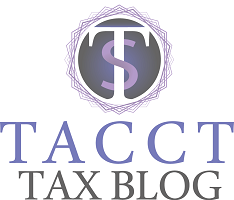If you have ever taken out a mortgage, you probably already know of the tax advantage provided by deducting your mortgage interest payments.
But many homeowners overlook another tax break available for points paid to get a home loan. In some cases, points also could shave tax bills for folks who refinanced or got an equity loan or line of credit.
Each point is 1 percent of the loan amount. Lenders charge points as a way to make a profit, and borrowers generally pay points in exchange for lower mortgage rates.
If you paid points, the amount should be listed on the 1098 statement from your lender. This document also notes how much mortgage interest you paid. Both of these deductible amounts go on line 10 of Schedule A. (If the points aren’t on that statement, but show up elsewhere — for example, on your closing documents — enter them on line 12. Check the Schedule A instructions for details.)
Getting the maximum deduction
On a conventional mortgage (usually a fixed-rate, 30-year loan that is not insured by a federal agency), points may be paid by either buyer or seller or split between them. Even if the seller pays all the points, the buyer gets the deduction. Exactly how much of one and when depends on the loan circumstances.
Loan points are fully deductible in the year paid if they meet all of these requirements:
- The loan is secured by your main home, the house you live in most of the time.
- Paying points is an established business practice in your area.
- The points are generally what is charged in your region.
- You use the cash method of accounting: You report income in the year you receive it and deduct expenses in the year you pay them. Most individuals do this.
- The points are not paid in place of amounts ordinarily stated separately on the settlement sheet. That is, you cannot pay points in exchange for lower or no appraisal fees, inspection fees, title fees, attorney fees and property taxes.
- The funds you come up with at or before closing, plus any points the seller pays, must be at least as much as the points charged. The money does not have to apply just to the points. It can include a down payment, escrow deposit or earnest money. But it all must come to at least as much as the points. For example, you took out a $100,000 mortgage and were charged $1,000 (one point). However, your lender only required a $750 down payment. In this case, you cannot deduct the full $1,000 points payment, only $750 of it. The remaining $250 must be deducted over the life of the loan. And you cannot have borrowed any of the money you paid at closing from your lender or mortgage broker.
- The loan is used to buy or build your main home.
- The points are computed as a percentage of your mortgage’s principal amount.
- The amount is clearly shown on the settlement statement as points charged for the mortgage. The points may be shown as paid from either buyer or seller funds.
These point deductibility rules apply to loan costs associated with your primary residence. When the loan is tied to a property that is not your main home, the points cannot be fully deducted in the year the loan was made. Points paid on a loan secured by a second home or vacation residence, regardless of how the cash is used, must be amortized over the life of the loan.
For more information on the Home Mortgage Interest Deduction view Pub 936 on IRS.gov
For more information on Tax Information for Homeowners view Pub 530 on IRS.gov



